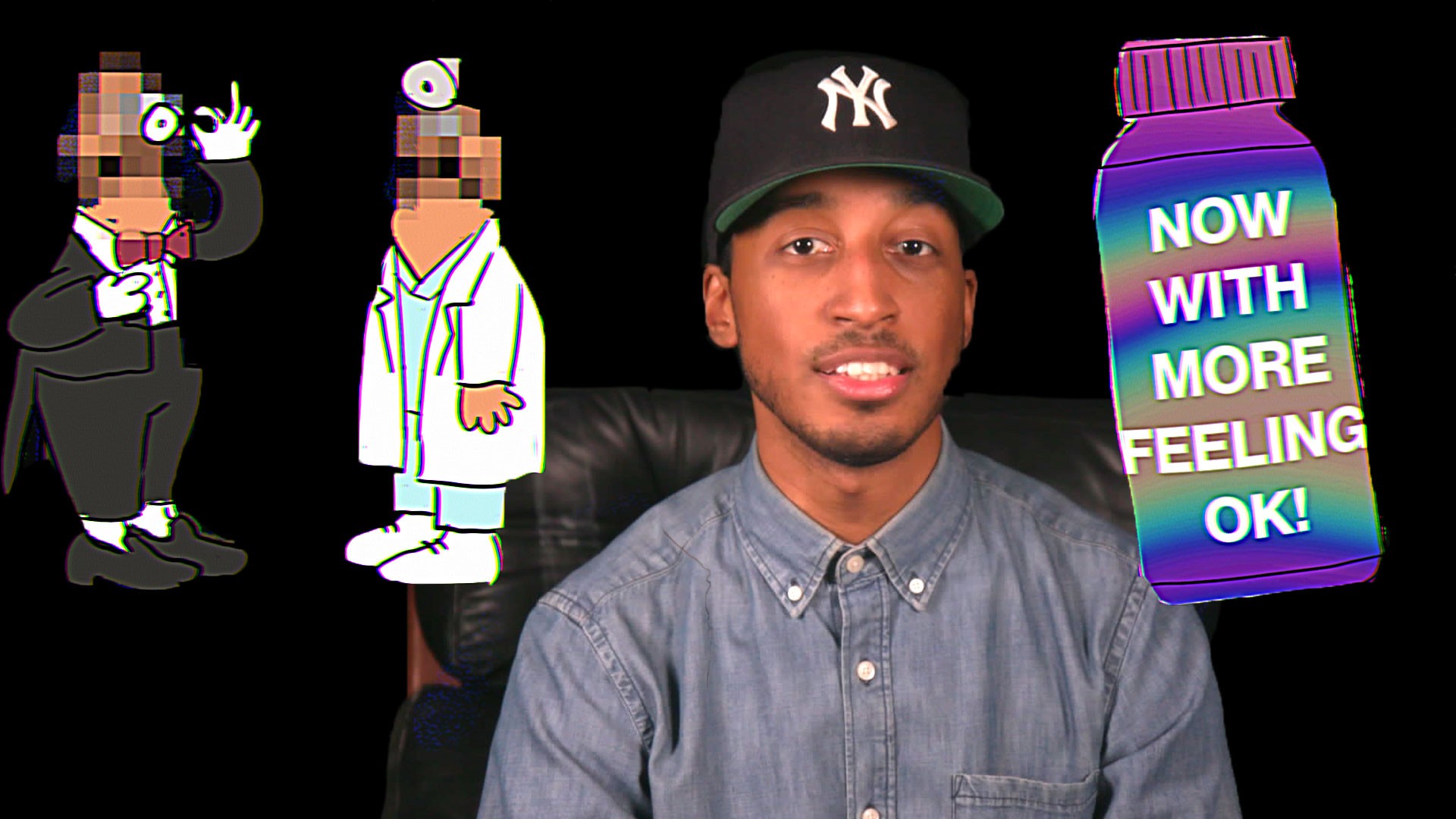Collage by Hunter French | Images via Shutterstock
It never occurred to me to buy a home air purifier until our veterinarian recommended it a little over a year ago. Our new kitten had just been diagnosed with asthma and prescribed an inhaler, which was curious to me because I'd just been prescribed one too for the first time in my life. I was getting over a lingering cold and my doctor recommended I carry one in my purse. She advised me to check the air quality online before I exercise outdoors and to stay inside if the air was bad. It's not just me: Friends who have never had respiratory issues before have been pulling out inhalers at lunch, mentioning periodic problems breathing.I live in Los Angeles, a city that the American Lung Association has consistently rated for the last 19 years as having the worst ozone pollution in the country in its State of the Air report. But air quality is also worsening all over the U.S., according to the report, exacerbated by climate change leading to spikes in ozone pollution as well as particle pollution caused by the increasing number of wildfires. Researchers at Carnegie Mellon University also noted an increase in consumption of natural gas and fuel with more cars on the road since 2016, and decreases in enforcement of the Clean Air Act, according to an October report. The subsequent increase in fine particulate matter, called PM2.5, between 2016 and 2018 has been associated with 9,700 premature deaths in the country in 2018.The health consequences aren't just respiratory. Air pollution has been linked, over decades of research, to everything from diabetes and obesity to learning disabilities in children to dementia and even brain cancer."Once pollutants get into your body, cross the air-blood barrier in your lungs and get into your bloodstream, they potentially can go anywhere your blood goes," said Ed Avol, a University of Southern California professor of clinical preventive medicine and environmental health. The body has mechanisms to defend and detoxify contaminants—still, this defense system isn't perfect. "Some pollutants can mimic (natural) enzymes and trick the body into changing rates at which hormones and other chemicals are released, that interrupts normal body functions. We also see particles and gases getting into the body and doing damage," he said.So how worried should we be? After the spate of fires across California last year and growing health concerns, my husband bought an in-home monitor that registers the air quality inside our apartment as well as outside. Using the same standard as the EPA app where users can plug in their ZIP code and check air quality, it employs a color-coded system using information gathered from sensors in the area measuring ozone and particulate matter. Green means the air is good, yellow is moderate, orange means unhealthy for sensitive groups and so on. A few weeks ago, the air inside our apartment was clean, due to our air purifier, but outside air was in the red zone, meaning pollution was at unhealthy levels and everyone may begin to experience health effects. There were no wildfires, no haze or murk, not even a bad smog smell. If I hadn't been in the habit of compulsively checking the monitor, I wouldn't have noticed. No one else did. Outdoor cafes were packed, runners were looping around the neighborhood.While checking air quality to get an idea of what you're breathing on any given day is a good first step, many prominent researchers point out that the current science suggests the EPA standards are overdue for an update. "Particularly under the current administration, this has been a controversial issue," Avol told me. "The science that supports those colored systems is continually evolving and I would have to say the current standards are in fact too lenient." Avol, and many other researchers with whom I spoke, would not commit to a number or range in terms of what level of pollution could be deemed safe for the general public, only that "we know based on the best available science that there are measurable health effects at current levels of air quality which is to say, we are not protecting the public.""Unfortunately, the current administration seem to have made the decision that they don't want to hear that much from scientists," Avol added. "They rather hear more from industry. So, I think you get a different picture, a different perspective."But the evidence of pollution's consequences is clear, say researchers. "We look at immune cells and we can see changes very quickly," said Mary Prunicki, a physician and director of air pollution and health research at the Sean N. Parker Center for Allergy Research at Stanford University. Even with seemingly small increases in particulate matter in the air, "you can see increases in hospitalizations and ER visits for cardiac disorders, like heart attacks and strokes," she added."These particles and gases aren't always visible to the naked eye," said Avol. And the spikes in pollution are independent of something like a wildfire. "It happens because of cars and trucks and planes and ships and bulldozers and all of the things that go on to make our lives more comfortable," he said. "What we burn, consume and produce, the chemicals and pesticides in our food, on our plants."

"We've got to stop burning stuff where people live," said environmental attorney Adriano Martinez, who goes by LA Smog Guy on Twitter. "In Los Angeles, we have this artificial standard of comparing ourselves to the 70s and 80s," when the smog was much worse, he said. "That's not the standard. The standard is if it's safe to breathe." Regulation is one of the most effective ways to reduce pollution, "and industry has spent decades making 'regulation' a toxic, four-letter word," he added. Rollbacks of EPA regulations under the Trump administration have made pollution worse, which can engender even more feelings of individual powerlessness. What are we supposed to do: not breathe?So I asked Martinez, as an authority on how bad the air is, how does he go about his day to day life in LA? Does he live in a hermetically sealed apartment? Why doesn't he move to Casper, Wyoming, where the air is measurably cleaner?"I check the air every morning when I wake up," he told me. "I have a four-year old daughter and my wife has exercise-induced asthma so I do have concerns for my family. If the air pollution is high, I don't have my daughter outside, I minimize exercise outside." He doesn't have an air purifier at home, but has an HVAC which improves indoor air quality, and lives in one of the less polluted parts of LA. "The biggest thing I've been trying to do, is build up the arsenal for fighting for clean air," he said.In terms of protecting personal health, Prunicki recommends trying to make your home as air tight a home as possible, HEPA filters on air conditioning and heating units, and possibly invest in an air purifier or designate a "clean room" in the house.Most ordinary people don't do these things, but during the worst of the wildfires last year, the bad air was impossible to ignore. In LA, smoke rolled in from Malibu and even miles away from any flames there was a thick smell of burning. Many people went out and bought the N95 mask, which is meant to be worn for short periods of time. There's also the trendy Vogmask, which come in a variety of colors and patterns, and is a popular Burning Man accessory. Vogmasks are designed to protect from PM2.5, dust, allergens, and mold spores. But masks have to be properly fitted so that no air seeps through gaps against the face. Men with beards, for example, aren't able to wear face masks effectively.Vogmask co-founder Wendover Brown told me that about half of their customers purchase masks for general wellness, for example lung sensitivity, and the other half buy them in response to a natural disaster or poor air quality. Brown hopes the designs will help make mask-wearing more acceptable. "Beautiful and comfortable masks have a much higher compliance in wearing," she said. "Plus, people look great in them."I spoke with a handful of people who bought Vogmasks for desert music festivals and they told me the masks are great for keeping out desert dust during wind spells. Others keep them on hand for high air pollution days—one friend with mild asthma told me she feels better wearing it and finds it easier to breathe, even though she admitted she's not completely sure how to fit the mask on her face. "If it doesn't quite fit, you may be deluding yourself to think you're being protected when you're really not," Avol said.I felt pretty confident about my home air purifier until Avol pointed out that positive effects can be quickly undone by time spent outside, particularly when you're exercising. The more research I do, the less I want to leave my house—which may be good my lungs, but not so healthy mentally. For now, I check the my air quality monitor in the morning. If it's on the high end of yellow or above, I won't exercise outside. I keep an inhaler handy, and a well-fitting N95 mask in my car. I teach part-time at UCLA and recently when air quality went into the orange, I dismissed class early. I had a few students from Beijing who looked at me quizzically when I made the announcement but were happy to get out of class early. I worry about health effects but try not to drive myself or my family too crazy about it, balancing that with fighting feelings of powerlessness that can breed apathy, and for now not moving to Wyoming.Sign up for our newsletter to get the best of VICE delivered to your inbox daily.
Advertisement
Advertisement
Advertisement

"We've got to stop burning stuff where people live," said environmental attorney Adriano Martinez, who goes by LA Smog Guy on Twitter. "In Los Angeles, we have this artificial standard of comparing ourselves to the 70s and 80s," when the smog was much worse, he said. "That's not the standard. The standard is if it's safe to breathe." Regulation is one of the most effective ways to reduce pollution, "and industry has spent decades making 'regulation' a toxic, four-letter word," he added. Rollbacks of EPA regulations under the Trump administration have made pollution worse, which can engender even more feelings of individual powerlessness. What are we supposed to do: not breathe?
Advertisement
